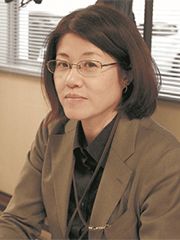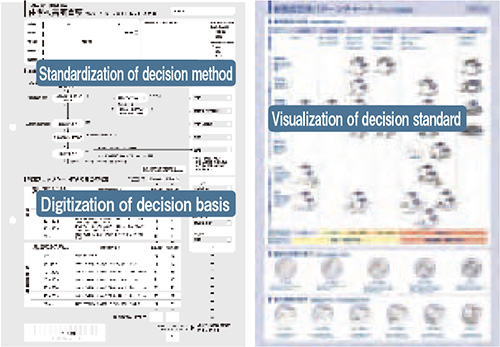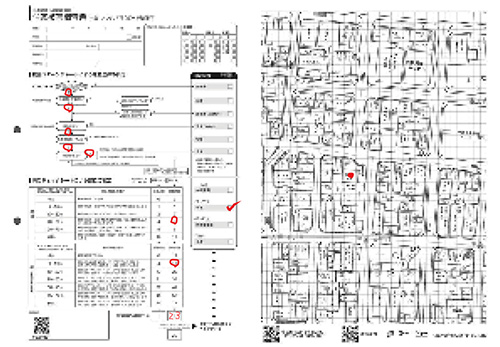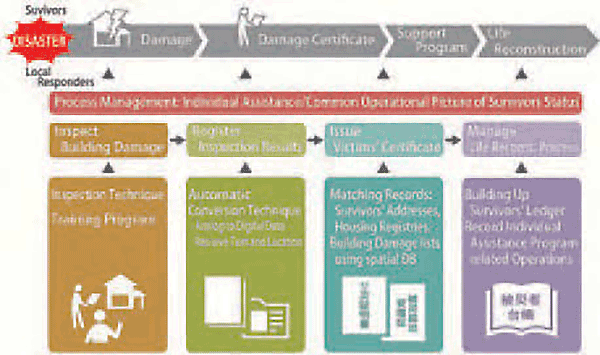Research Results
Using the victim database
Implementation of a life recovery support system FY2016

- Keiko Tamura (Professor, Risk Management Office, Headquarters for Risk Management, Niigata University)
- RISTEX Information Technology and Society
- "R&D Program Governance of Ubiquitous Society" Researcher (2007-2009)
- RISTEX Implementation-Support Program R&D results integrated Type
- "Development of Life Recovery Support System for a Possible Tokyo Metropolitan Eathquake" Person responsible for implementation (2012-2013)
Developing a method to certify building damage made by anyone who have to become an investigator
When the Great Hanshin-Awaji Earthquake occurred in 1995, one of the challenges for governments became obvious. It was the problem related to "victims certification." Victims certifications are issued for disaster victims from municipal governments when disasters occur. It is an important document which describes the damage situation of houses etc., and which becomes the judgmental standard for the amount of assistance, tax allowance, allocation of monetary donation, etc. However, the standard for creating the document and the division in charge of dealing with the documents were different depending on each municipal government before 1995.
As a result, contents described in the documents lacked accuracy, and approximately 30% of disaster victims were not satisfied with the decision from municipal governments.
Ever since Professor Keiko Tamura was a researcher at Disaster Prevention Research Institute, the Kyoto University, she and Professor Haruo Hayashi who both belonged to the same institute, worked on creating a system that can issue victims certification impartially.
To learn from the actual case of the Great Hanshin- Awaji Earthquake, more than 12,000 photos of houses that showed their damage situation in Nishinomiya city, Hyogo prefecture, were compiled as a database, based on GIS (geographic information system) that can highly and rapidly analyze data possessing geographical information. Also, a training system was created so that a person who is not a specialist becomes the investigator to certify building damage impartially.
In October 2004, the Niigata Chuetsu earthquake occurred and it provided the opportunity to implement the developed system. Staffs and others from Ojiya city who had no expert knowledge made use of the system to create a database for house damage. Furthermore, more than 3,000 sheets of victims certification were issued in four days by organizing an issuing system.
Developing a method to certify building damage made by anyone who wants to do so

Digitalizing questionnaire data using QR code

Aiming for trouble-free production of victims database by digitalizing questionnaire data
In the case of the Niigata Chuetsu earthquake, there were some achievements as mentioned above, while some new challenges became obvious. The victims certification only functioned temporarily; therefore, in order to support the life of disaster victims continuously, it was necessary to create a "victim database" to organize and preserve such information. An attempt to create a database based on the victims certification was made. However, since the victims certifications were created on paper media, it required a great effort to make the database. To work on this new challenge with sincere effort, in 2006, Professor Keiko Tamura took on a new assignment at Research Center for Natural Hazards and Disaster Recover, the Niigata University, which is located close to Ojiya city.
She was selected to the R&D program of RISTEX "Information and Society" R&D Area, and with the representative of the research, Professor Hayashi, she worked on digitalizing questionnaire data using QR code. When the Noto Peninsula Earthquake occurred in March 2007, she created a victim database using the developing system in Wajima city, Ishikawa prefecture.
Proactive support for people without leaving anyone untreated
When the Niigataken Chuetsu-oki Earthquake occurred in 2007, she not only created a victim database but also worked on supporting life recovery based on the database. However, at the place, she faced a situation where more than one-third of disaster victim households did not apply for life recovery support. There were many people who did not know the existence of the support and ones who could not come and apply for it due to family circumstances. Therefore, support for people without being left untreated was realized by reaching disaster victims from city side with a proactive approach using the victim database.
In this way, the "life recovery support system" was prepared so as to lead to rapid and continuous support for disaster victims, based on the database that links building damage investigation, victims certification issuance, and creation of victim database altogether. When the Great East Japan Earthquake occurred in March 2011, through cooperation with Iwate prefecture, she and the prefecture made an effort to create a victim database making use of this system and previous experiences. Based on the victim database, the prefecture proactively approached disaster victims to connect them to the life recovery support system.
Total System Design for handle transactions in all the process from the beginning to successful conclusion of survivors' life reconstruction

Acting before a disaster takes place, not after. Accelerating support
Having these approaches in mind, an attempt by the governmental administration has started from 2011 to accelerate the speed from earthquake occurrence to life recovery support system by carefully preparing for an earthquake disaster before it takes place.
With the cooperation of Tokyo, a test was conducted in the way that the staffs actually issue damage certificates and victims certifications through trainings. Professor Tamura has taken over the role as Person responsible for implementation from Professor Hayashi, and she is working on the implementation of the system. Currently, implementation is completed in Kyoto and Iwate prefectures and Kobe and Chigasaki cities. In addition, it is in progress in Tokyo and Niigata prefectures.
Since Professor Tamura and others physically went to places where disasters occurred and worked on implementing the system with the persons in charge of governmental administration, the problems of life recovery support system for disaster victims were found and the system has been improved to one that is more beneficial. Continuing with this spirit of improvement, it is hoped that this system will be advanced even further with more improvement.

The "victims certification issuing experience" training was conducted as a part of emergency drill on the Disaster Prevention Day in Tokyo.
